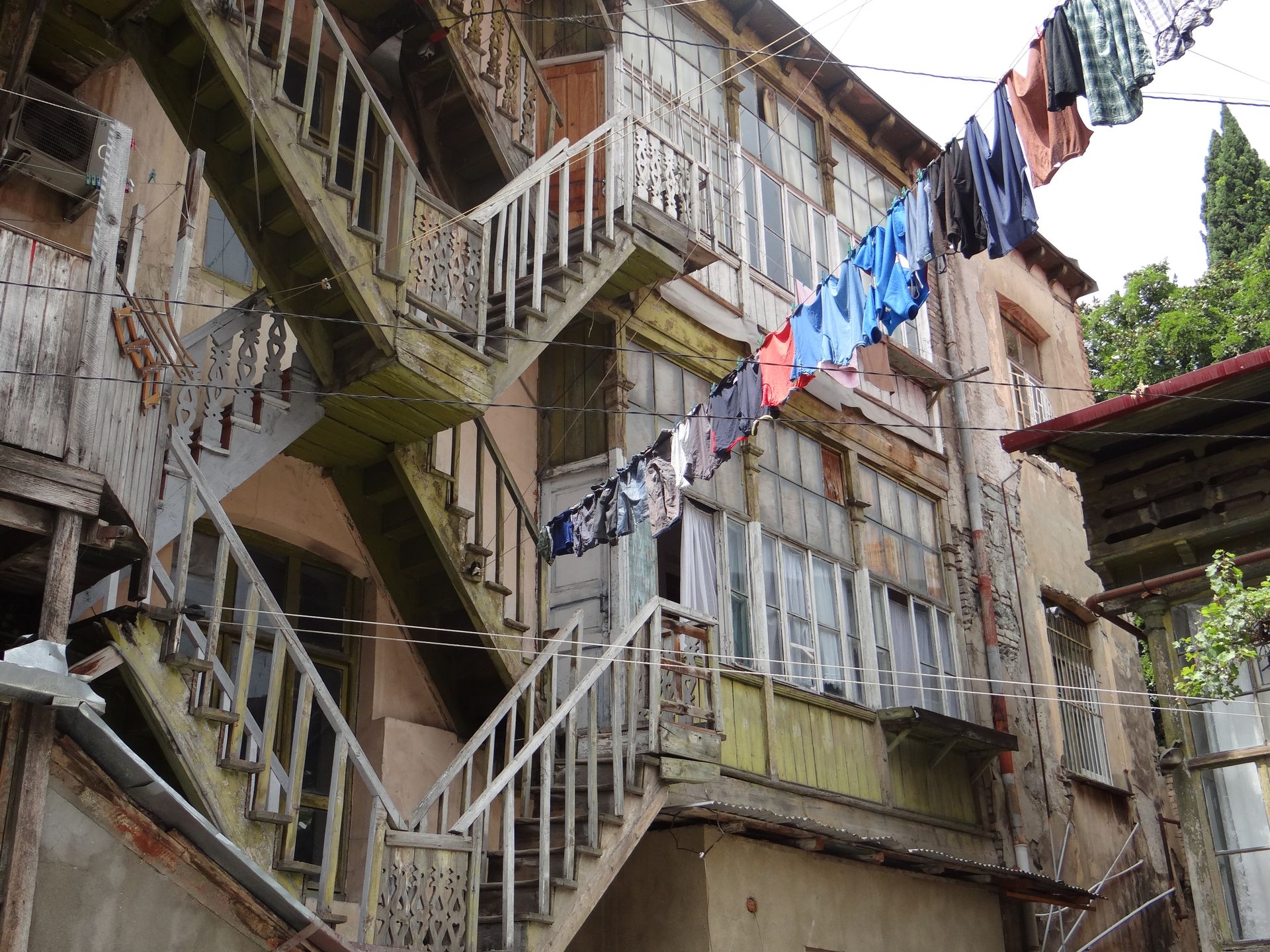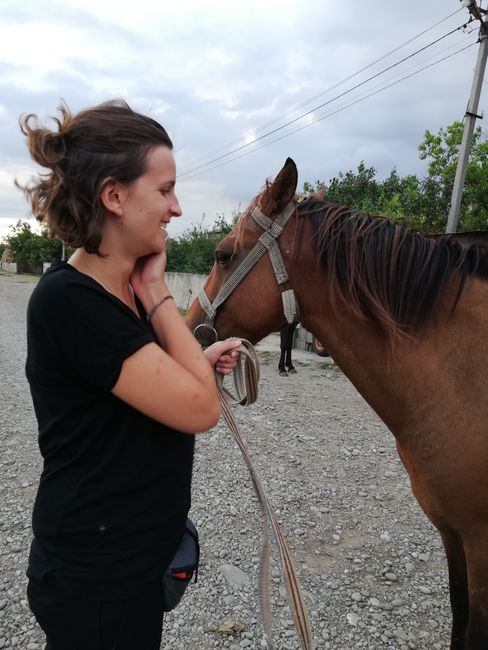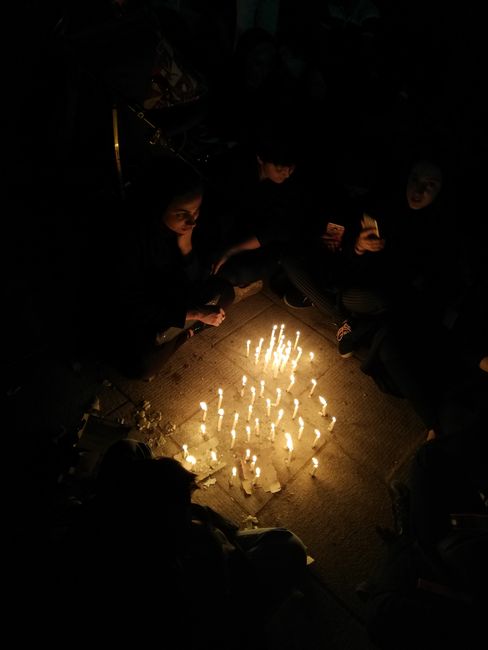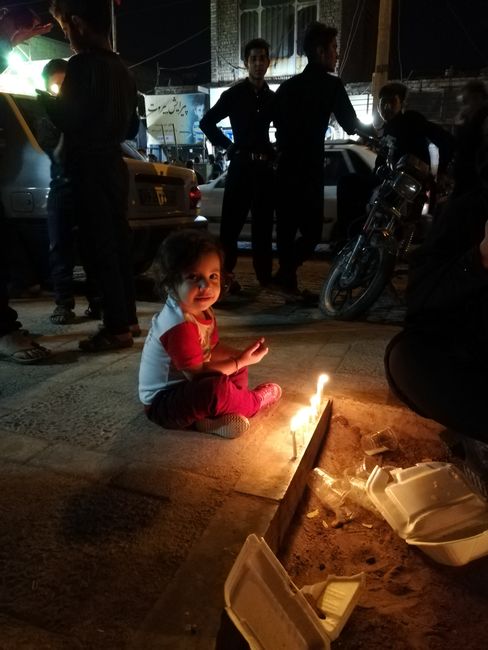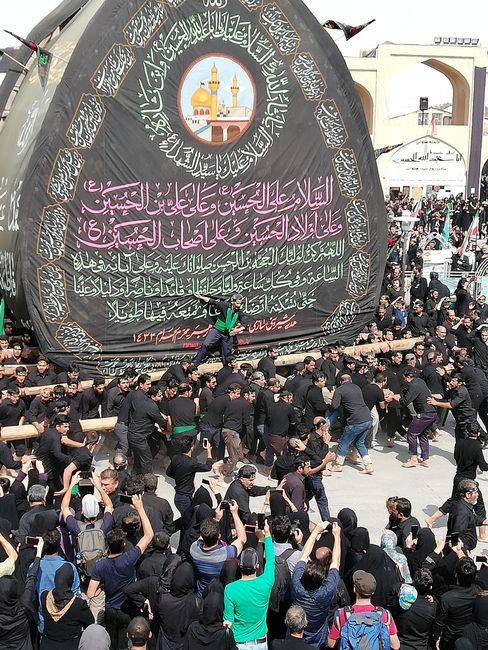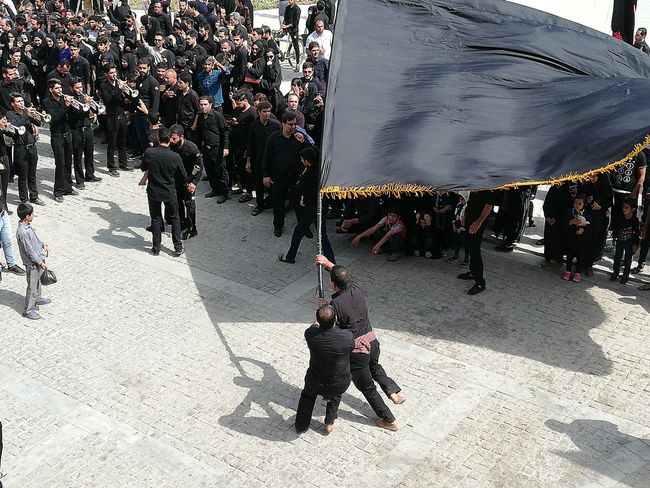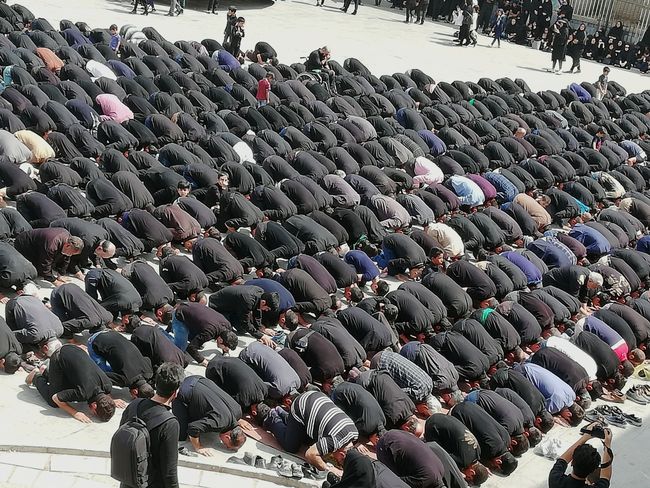Ashura in Yazd
Publicado: 30.09.2018
Subscríbete ao Newsletter
As caring as Bandar Abbas had stopped, it continued in Yazd.
We were allowed to sleep on the rooftop of the hostel until the next morning, and the sleepy hostel man left us alone only when we were not ready to sleep yet, but also covered up to our chin. But it was really cold that night.
As in Egypt, Iranians are not allowed to stay in hostels. However, the next morning, it was already noticeable that some Iranians had checked in who, like us, wanted to witness the special spectacle in Yazd. After breakfast, we put on dark clothes, as black was the color of the day. Only one girl from the hostel either didn't know what day it was or wanted to show rebellion against Iran. In both cases, it was relatively surprising that she decided to wear a belly-free and semi-transparent top as well as a hat instead of a headscarf on the most important mourning day of the Shiites in Iran. The men from the hostel couldn't even mention that their outfit could cause them to spend the day at the police station. That's why I helped out and, to her annoyance, explained to her that she should better change her clothes.
We set off and looked for the main square where the main ceremony was to take place. On the way through the old town of Yazd, we saw hundreds of women standing in line. Why, for what, and where we did not know - but we thought it was a good idea to join the line.
We didn't stand in line for long. Suddenly, a domino effect occurred and we were pushed and shoved to the front by all the women. We were pushed through barriers (very often in Iran, people are pushed around with feather dusters instead of hands) and squeezed past women. Eventually, we were right at the front and finally found out where we were: in a mosque to pick up some of the food prepared there during the month of mourning. We now carried two Styrofoam boxes of chicken rice through the city.
Finally, we arrived at the main square. The water in the fountain on the square was dyed red and was supposed to remind of the shedding of blood of the 77 martyrs and Imam Hussein.
Next to the square was a bridge, on which we saw people standing. I didn't believe that we could climb up the bridge, which seemed more like a VIP and press area to me. But we tried anyway and a little later we were on the bridge, where we didn't move away from for the next 4 hours and from where we could watch the entire parade perfectly.
At the beginning of the ceremony, we were already impressed. All tourists were welcomed via loudspeakers, who were present on this day. We immediately imagined the absurdity of a counterpart in Germany. It is hard to imagine that on Easter, priests and mayors warmly greet all visiting Muslims. Point for Iran in the category of hospitality.
The fact that so much care was taken of us also has religious reasons. All tourists in Yazd on Ashura are seen as personally chosen by Imam Hussein. In the eyes of the faithful Muslims, we basically had a halo over our heads.
Whipping resumed, there was a fanfare parade, with such large flags being waved that two men were needed to stabilize the flagpole. Then, after some time, an imam was placed on a gigantic black thing in the shape of a fig leaf, which was then carried in a circle by several dozen men several times. It was all something between impressive and strange.
Suddenly, something shouted behind us! Women took our water bottles and poured water on an unconscious woman who had two crying children on her lap. When she woke up, she couldn't move her mouth, her children were crying, and the women kept asking her over and over again what was wrong. I suspect the woman didn't know herself because when she regained control of her mouth, she screamed her head off. By now, tears were also welling up in my eyes, especially for the children felt so sorry. How terrible must it be for children when their own mother screams and faints.
We had to recover from the shock. When the woman was taken away by her family, we also left the festival area to see what else was going on.
We strolled through Yazd. The streets were crowded but overall it was quiet. We talked about everything we had seen and drank one of the free lemonades that were being distributed.
But suddenly something happened. A procession came out of a side street. Again with the usual elements. Black-green-red banners, men beating each other, a kind of huge candlestick, and drums. But again, it was only men. They passed by us.
But behind the men, there was something new. Running women. With slightly desperate faces and with some effort not to step on their own or their neighbor's chador, the women stormed through the street. A girl who had spoken to us explained that another ceremony would take place shortly and the women had to hurry to arrive on time.
For us, it meant following. We followed the women and went to the second grand mosque in Yazd. From a staircase, we observed the mass of people but couldn't see anything particularly special.
When the ceremony was over, everyone went their way and left the square in front of the bazaar and the mosque. Now we saw what was special about the ceremony: a lamb had apparently been slaughtered, and the lamb and the puddle of blood were still on the street. Sad. What I found particularly terrible about the sacrifice was that the sheep surely had the most terrible hour of its life when it was carried through the city by shouting, drumming, and weeping men and ceremonially had its throat cut.
We needed a little lunch break and went back to the hostel for a nap. With the help of the reception of a neighboring hotel (our own receptionists were somewhere between unhelpful and a bit stupid), we found a restaurant that was not closed on this day. We dined like queens and then set off for the next ceremony.
Candles were to be lit in the festival square in the evening.
When we arrived, it was already sparkling everywhere. Again, we positioned ourselves on the bridge and enjoyed the view of the many groups of friends and families sitting around candles and letting the evening come to an end. Really very beautiful, very peaceful and magical.
Ashura in Yazd was great! Very impressive and special. Not so much the ceremonies themselves, to be honest, we imagined them to be bigger and they quickly became somewhat redundant without knowledge of the prayers. Rather, what remains in memory is the atmosphere on the streets. The weeping people, the awe, the spirituality, the hospitality, and the openness towards us.
The next day, we went on the Free Walking Tour. In the first few seconds, we had the impression that it wouldn't be that great, but the first impression was not confirmed. Our guide explained a lot about the Ashura traditions and focused on the distinction between Persian and Islamic history. Yazd is also a capital of the natural religion of the Zoroastrians, who were influential in Persian architecture and culture before the Islamization of Iran. Today, there are only a few tens of thousands of Zoroastrians left in Iran, a large proportion of them in Yazd.
We also visited a museum about this culture the next day. In their religion, it is forbidden to waste water, children decide at the age of 14 whether they want to be part of the community, and the traditions are very respectful. Siiri and I wondered what the world would be like if not Islam and Christianity had conquered large parts of the world, but a natural religion that does not see humans as the crown of creation but as an equal part of nature that must be protected. Who knows...
Subscríbete ao Newsletter
Resposta
